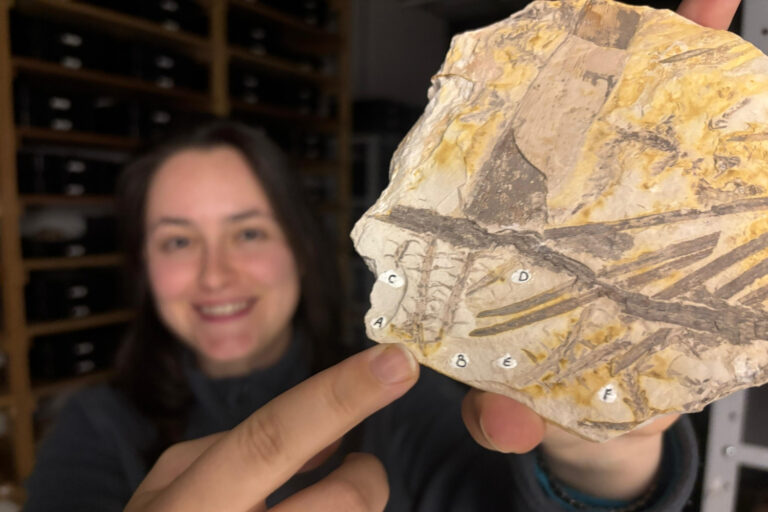Underwater Robot SINKER Shows How the Ocean Stores Carbon in Real Time

The Monterey Bay Aquarium Research Institute (MBARI) has unveiled a groundbreaking new underwater instrument called SINKER—short for SINKing Ecology Robot—that’s designed to monitor how carbon sinks into the deep ocean. This device represents a major leap in understanding one of the most important yet least understood processes regulating Earth’s climate: how carbon moves from the ocean’s surface to its depths.
A New Way to Watch Carbon Sink
The ocean is our planet’s largest carbon sink, absorbing vast amounts of carbon dioxide from the atmosphere. Tiny ocean plants called phytoplankton pull CO₂ from surface waters during photosynthesis. When these organisms die or are eaten by larger plankton, their remains—along with waste and mucus—clump together into what scientists call marine snow. These organic particles slowly drift downward, transporting carbon to the deep sea, where it can stay locked away for decades or even centuries.
This natural system, known as the biological pump, plays a huge role in balancing the global climate. However, scientists have long struggled to accurately track and measure how much carbon actually makes it into the deep ocean. Factors like the size, composition, and sinking speed of particles can change quickly and unpredictably. Until now, most data came from short-term field expeditions, leaving major gaps in our understanding.
That’s where SINKER comes in. MBARI’s new robot is built to fill those gaps by capturing real-time images and measurements of sinking particles continuously over months or even years.
The Technology Behind SINKER
SINKER is loaded with five specialized cameras and advanced microscopes that record the behavior of particles as they fall through a central collection tube. Here’s how it works:
- Three downward-facing cameras photograph the particles as they move through the tube, helping scientists calculate their sinking speed.
- Once the particles land on a collection plate, two upward-facing cameras take high-resolution photos that reveal the size, shape, and composition of each piece of marine snow.
- Every two hours, a small brush sweeps across the imaging plate to prevent buildup and keep the system clear for new data.
The robot is moored to the seafloor—currently at a depth of about 900 meters (around 3,000 feet) off Monterey Bay, California—and connected to MBARI’s cabled ocean observatory. This connection provides continuous power and a data link back to shore, allowing researchers to watch carbon transport as it happens in the deep sea.
The system was first deployed in July 2025 aboard MBARI’s research vessel R/V Rachel Carson. The team plans to retrieve it in December 2025, analyze the data, fine-tune the design, and then redeploy it for at least a year—possibly much longer.
Why This Research Matters
Understanding how and when carbon sinks into the ocean is essential for predicting how climate change will affect the planet. The biological processes behind carbon storage are influenced by temperature, oxygen levels, and ocean circulation—all of which are changing due to global warming.
One of the biggest problems with current climate and carbon models is that they lack detailed biological data. Scientists can estimate how much CO₂ the ocean absorbs, but not exactly how much of that carbon stays locked away in the deep. Variability in marine ecosystems—such as shifts in plankton species or water chemistry—can dramatically alter how efficiently carbon is exported from the surface.
SINKER’s continuous data will help scientists better understand these fluctuations. By watching marine snow in real time, researchers can identify who produces the particles, how quickly they sink, and how their composition changes under different conditions. These details can then feed into improved global carbon cycle models, making predictions about future climate patterns more accurate.
Collaboration and Innovation at MBARI
Developing SINKER required a mix of engineering, oceanography, and ecology expertise. MBARI’s Carbon Flux Ecology Team, led by scientist Colleen Durkin, collaborated closely with in-house engineers and technicians to design the system. The team wanted a device capable of imaging particles as small as tens of micrometers and as large as a few centimeters, with the ability to capture new images every second if needed.
To achieve this, MBARI engineers designed custom frames, circuit boards, and underwater housings from scratch. Many components were fabricated directly in MBARI’s machine shop. Senior Electrical Engineer Paul Roberts described SINKER as the culmination of technologies MBARI has developed over the past decade—bringing together multiple imaging systems in one compact, durable package.
By combining different camera perspectives, SINKER captures a more complete picture of how marine snow behaves as it sinks. Senior Research Specialist Crissy Huffard noted that collecting multiple variables at once—such as size, shape, and sinking velocity—creates a new standard for biological observation in carbon export studies.
A Glimpse Into the Deep Ocean
SINKER’s current deployment site lies just outside Monterey Bay, a region already well-studied by MBARI for ocean carbon research. Data from this experiment will allow scientists to connect changes in surface productivity to patterns of sinking carbon deeper down. Because the system is powered continuously, researchers can detect daily, seasonal, and even event-driven changes in carbon flux—something impossible to achieve with occasional sampling.
Once the first batch of data is analyzed, MBARI plans to refine the robot’s design and deploy similar systems at other cabled observatories around the world. This will help compare how different ocean regions—temperate, tropical, or polar—store carbon.
Filling the Gaps in Climate Knowledge
The new insights provided by SINKER will help close long-standing knowledge gaps in Earth’s carbon budget. By knowing how fast and how deep carbon sinks, scientists can estimate how long it stays isolated from the atmosphere.
If particles sink slowly or break apart before reaching great depths, much of that carbon can return to the atmosphere more quickly, reducing the ocean’s effectiveness as a carbon sink. Conversely, faster and deeper transport can keep carbon locked away for hundreds of years.
With continuous, high-resolution monitoring, SINKER will reveal how temperature shifts, nutrient availability, and biological composition influence these dynamics. This knowledge will not only refine climate models but could also inform policy decisions about ocean conservation, carbon offsetting, and climate intervention strategies.
The Ocean’s Hidden Role in Climate Control
The ocean’s ability to absorb and store carbon is one of the planet’s most important defense mechanisms against climate change. It’s estimated that the ocean has absorbed more than a quarter of all human-generated CO₂ emissions so far. However, warming waters and changing ecosystems could weaken this ability.
During marine heatwaves, for example, MBARI scientists have observed disruptions in the biological pump. Warmer waters can cause plankton communities to change, leading to slower-sinking particles that linger in mid-depths instead of reaching the seafloor. These particles may then decompose and release CO₂ back into the water column.
By continuing to study these interactions with tools like SINKER, scientists can better forecast how oceanic carbon sequestration will evolve under future climate scenarios.
Looking Ahead
The MBARI team envisions keeping SINKER operational for many years, continuously collecting data that show how carbon flux changes over time. If successful, it could become a global standard tool for observing deep-sea carbon transport.
Long-term, real-time observations will allow researchers to connect biological activity near the surface with carbon burial thousands of meters below. Understanding this link will not only clarify how the ocean regulates Earth’s climate but also help predict how changing environmental conditions—like acidification and deoxygenation—will affect marine ecosystems.
Ultimately, SINKER represents a major technological and scientific step forward. By capturing the small-scale details of marine snow, it helps illuminate one of the biggest questions in Earth science: how the ocean manages the planet’s carbon balance.
Research Reference:
MBARI – New MBARI Technology Reveals Ocean Carbon Storage in Real Time (2025)





